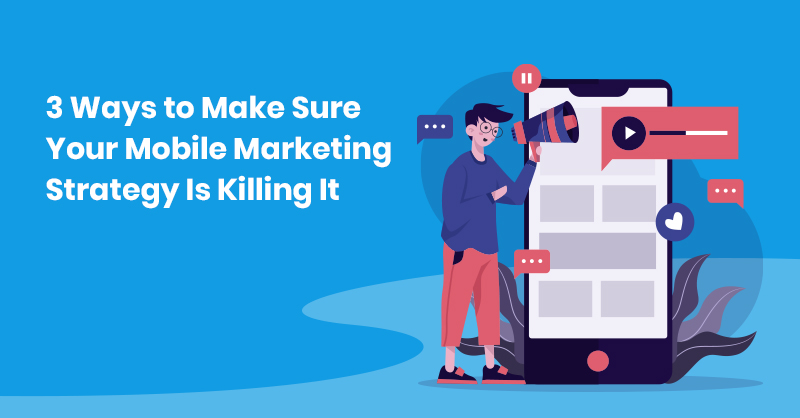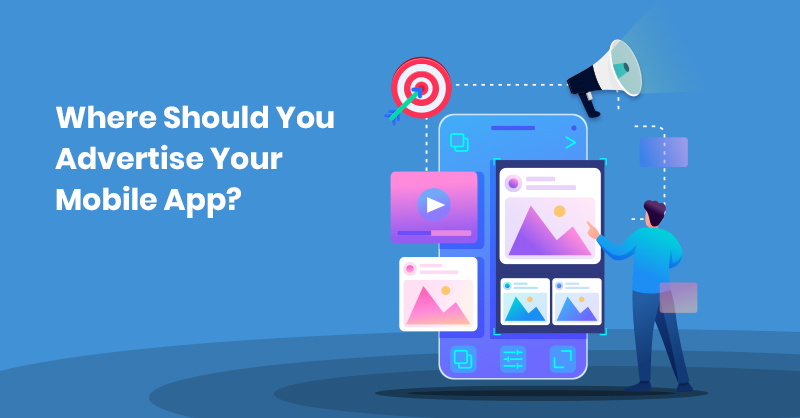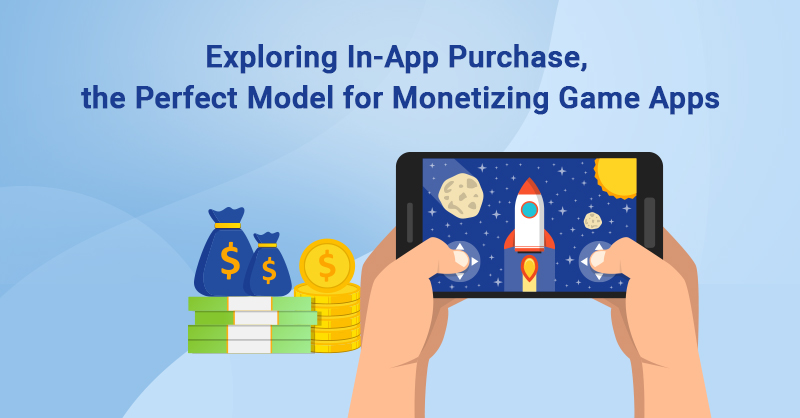Smartphones are widely used by almost everyone. It’s quite easy to get your message to people’s smartphones and a higher chance of being viewed than if you aired a TV commercial.
Furthermore, mobile ads are potentially more viewed than desktop ads. All this contributes to the fact that mobile marketing is one of the most desired marketing channels for your business.
But with great power comes great responsibility. Because mobile marketing is the most accessible, its chances of being misused is amplified. In fact, the great number of irrelevant and deceptive ads has made it quite difficult for people to trust mobile ads at all.
On the other hand, if done the right way, mobile marketing can do wonders. Here are some simple ways to ensure your mobile strategy is killing it:
1- Map Out Your Customers’ Lifecycle:
Candybar defines the “customer lifecycle” as “the process the potential customer goes through to discover your brand, to research your product or service, and to finally make a purchase.” Figuring out what role smartphones play in your customers’ lifecycle (or your customers’ journey) is not just an option these days. It’s a must. Smartphones have a very special place in every business’s customer lifecycle. The problem begins when you have no solid strategy for your customers’ journey and use mobile marketing as an option, merely a complement to your main marketing strategy. This would result in gaps in your funnel.
To figure out the role smartphones play in your customers’ journey, you need to map it out. An HBR article explains that you need to consider the following framework in your customer journey map:
- Actions: What is the customer doing at each stage? What actions are they taking to move themselves on to the next stage?
- Motivations: Why is the customer motivated to keep going to the next stage? What emotions are they feeling? Why do they care?
- Questions: What are the uncertainties, jargon, or other issues preventing the customer from moving to the next stage? As Ben Aston explains, answering your customers’ questions will increase revenue by up to 15% while also boosting customer satisfaction by around 20%.
- Barriers: What structural, process, cost, implementation, or other barriers stand in the way of moving on to the next stage?
Needless to say, all of these questions should be answered based on actual data rather than hypotheses—you can’t over-complicate your customers’ journey. For starters, try to break down your customers’ interactions into three general stages:
- Awareness
- Purchase
- Post-purchase
This is obviously the most basic way of explaining what a customer journey map looks like, and it makes perfect sense that each stage has its own sub-stages.
To give you an idea of what this should look like, here is an example of a customer journey map by Dapper Apps, an Australian-based mobile app development company.

The idea is to have a blueprint of how the actual customers decide they need a product, how they make up their minds and start searching for solutions, how they come across your product, and how they make sure that you’re the right fit for them and finally make the purchase.
The question remains, what role do smartphones play in this journey?
The short answer is: smartphones are mainly used in the researching phase of the customers’ journey.
But if you’re interested in a more detailed explanation of smartphone users, the following two are the most prominent:
-
People Use Smartphones to Accomplish and Be Productive
A study published by Google shows that 75% of people use their smartphones to be more productive. Feelings of productivity and accomplishment are entangled. People use smartphones to accomplish tasks quickly when they have a quick spark of thought and need to get it done fast (maybe doing quick research on a topic online), when they have an urgent need (like picking up dinner on the way home), when they’re buying in-store (such as reading reviews or finding better deals), when they need to take advantage of dead time (waiting for a doctor’s appointment), and when they’re planning ahead of upcoming events (like finding the best route for a trip).
Smart marketers know the value of productivity and use it to their advantage. Using this framework, marketers can find ways to assist people in accomplishing their tasks and being productive. The My Starbucks app is a great example of how a company can play smartly on its customers’ desires and mindsets. Using this app, people can order coffee ahead while doing other tasks, eliminating the need to stay in line and wait to receive the order.

-
People Use Smartphones to Validate their Purchase Decisions
The modern customer journey is more complicated than before. Today people use their phones frequently to research products and make sure they’ve chosen the best one to purchase. 74% of in-store shoppers who searched online before going to the store to shop said they searched for something in-store related such as the closest store near them, locations, items in-stock, hours, directions, wait times, and contact information.
People tend to use their smartphones even in-store, to look up products, check out reviews and ratings, and find similar products. It seems that online prices, reviews, or recommendations have more influence than the real-life versions. 80% of smartphone users are more likely to purchase from companies with mobile sites or apps that help them quickly answer their questions.
Smart marketers can take advantage of this behaviour by making the validation process easier for customers. A few years ago, Sephora did this by analyzing organic local search behaviour and providing the information customers needed. They provided an app that allowed customers to scan products and see reviews and ratings to make the perfect purchase.
Speaking of online ratings and reviews, we have no choice but to talk about mobile marketing trustworthiness. Customers are now prone to third-party information when weighing out your product, and it doesn’t make any sense trying to trick them into buying from you.
2- Avoid Deceptive and Intrusive Marketing
Gone are the days when marketers could get results from shady ad techniques such as click-baits or deceptive ads. Today people are ad-savvy and are easily repelled when faced with deception.
The negative effects of ad deception go far beyond poor campaign performance. It hurts your brand’s reputation and can get you in trouble with the law. Famous brands such as Uber, Activia, and Volkswagen all were fined millions of dollars because of deceptive ads. In 2014, Red Bull paid $10 to every US consumer who had bought the drink since 2002 only because they had the slogan, “Red Bull gives you wings,” which was a false statement.
Some of the most repulsive deceptive ads and clickbait are used in mobile advertising. Chatmost placed a dirt mark on its banner ad so that people would try to clean it and touch the ad.

Some of the most repulsive deceptive ads and clickbait are used in mobile advertising. Chatmost placed a dirt mark on its banner ad so that people would try to clean it and touch the ad.

The results of these tactics were nothing other than people’s distrust. In a short time, these companies went viral as examples of companies using deceptive advertising. Many subreddits talked about them, and they were mentioned in big publications, such as Adweek, for their shady methods.
The key to effective mobile marketing is less obtrusive and more appealing. One way is to take your ad format seriously. A study by IPG Media Lab and Magna Global titled “Battle of the Mobile Ad Formats” analyzes different ad formats and their effects on users. One interesting finding in this study was the efficacy of vertical ads.
Kara Manatt, SVP, Intelligence Solutions & Strategy of Magna Global says, “We always have hypotheses going into research, yet there are often genuine surprises in the data that yield invaluable insights for marketers – in this case, the sheer impact of vertical video. There was a big impact on the perceived uniqueness of the brand stories and how much they were willing to pay for the brand with vertical video. It’s especially surprising given how few videos are made in this format – truly with the mobile environment in mind.”

It’s true that videos look natural horizontally, but data shows that 90% of the time, users hold their phones vertically with one hand, keeping their other hand free. Using vertical videos makes the consuming process easier than horizontal videos. 72% of the millennials don’t bother to hold their phones horizontally to watch widescreen videos.
Interactive ads are also very effective. In an attempt to advertise its new face acne product, Pond created an interactive ad that used the mobile phone’s front camera and scanned the various areas of the person’s face to detect the acne-prone areas of their skin.
This resulted in 39,000 users interacting with the ad and an average engagement of 29 seconds.
3- Use Tried and Tested Strategies:
When it comes to mobile marketing, standard tried and tested strategies work the best.
GetSocial offers a comprehensive framework for app marketing. Like any effective marketing strategy, it all starts with market research — getting to know your customers and your competitors — and then goes on to preparing marketing materials. Marketing materials are divided into two stages: pre-launch and post-launch.
Pre-launch:
Marketing the product before its release. This creates a buzz about the product and generates demand for when the product is ready. Some of the pre-launch marketing tactics include:
App store marketing: The app stores allow you to promote your content before the launch. You must optimize your material based on the requirements of the app stores you’re planning to put your apps on. You should upload texts, screenshots, banners, icons, and promotional videos.
Content marketing:
People still use search engines to find apps for their needs. Smartphones are excellent for quick searches when a simple question comes to mind. This is where content marketing and search engine optimization (SEO) come in handy. Keeping a blog (Adam Connell has an extraordinary guide on this), keyword targeting, list building, and email marketing are essential for promoting your app. Instasize, a photo editing app, has a website that ranks for some photo/video editing keywords. They have also optimized their website with various download type CTA’s in different places. This increases the number of downloads for sure.

Email marketing has the highest ROI among marketing channels. Promoting your app to a healthy email list could increase your downloads and establish you as a brand that communicates regularly with its customers. The key here is having a healthy and responsive email list. Omnisend’s guide on list building is a great help for any app marketer interested in email marketing.
Landing pages:
Landing pages are a crucial part of any marketing campaign. When running ads, you need to make sure your landing page is optimized for the target audience.
Post-launch:
There are some tactics you can use to improve acquisition:
App Store Optimization (ASO):
When you have your app featured in app stores, you need to make sure it’s accessible as possible by optimizing some elements, such as the keywords you use in your page, various visual elements such as icons and screenshots, trust elements such as user ratings, positive testimonials, number of downloads, five-stars, etc.
Building trust:
Trust is the most important element in marketing. Before deciding to make a purchase, people try to figure out whether a product is trustworthy or not. Marketers can use certain elements to build trust with their audience. Some of these elements include positive reviews, five-star ratings, having many users or followers, etc.
Some content marketing tactics, such as guest posting on popular niche blogs, social media marketing, influencer marketing and referral marketing, could build trust with your audience as well. According to Sales Handy, some of the biggest companies use referral programs as a growth strategy to grow their customer base and increase loyalty and trust. DropBox’s referral program, for example, grew its user base by 3900%.
Paid marketing:
You can promote your apps on some paid channels, such as paid press releases, social media ads, ad networks, and app directory listings.
Increasing retention:
Any marketing strategy without a plan for keeping the current customers is incomplete. For in-app marketing, two of the most prevalent strategies are user onboarding and deep linking. Onboarding is the process of introducing an app or software to the first users. A better onboarding process makes it easier for users to understand how the software can help them. In its guide on onboarding UX, Userpilot explains that great onboarding increases conversion rate, retention rate and customer satisfaction. It also reduces the number of questions or issues the customers face.
Finally
Mobile marketing is no longer an option to consider alongside other marketing channels.
It’s part of the actual customer journey. Missing out on the mobile phase of your customers’ journey would leave a gap in your funnel where most of your customers would trip over and lose their grips with your brand.
However, because smartphones are the most accessible devices, you need to have a well-thought strategy to avoid becoming obnoxious to people. First of all, you need to figure out your customers’ behaviour when it comes to smartphones. How do they use their smartphones, and what effects do these behaviours have on their purchase decisions?
You should then lay down a clear marketing strategy and try to be as trustworthy as possible. Avoid shady mobile marketing methods as they backfire more severely compared to other marketing channels. You should also be cautious about the ad formats that are less obtrusive for your customer and have the most effect. Use tried and tested ad formats to make sure you’re getting the best bang for the buck.






on
Useful and helpful Post. Thanks for sharing this post here.
on
Thanks for sharing such authentic information with us. You completely detailed about the ways of mobile marketing strategy. I hope you will share such type of content.
on
Very nice!!! This is really good blog information thanks for sharing.